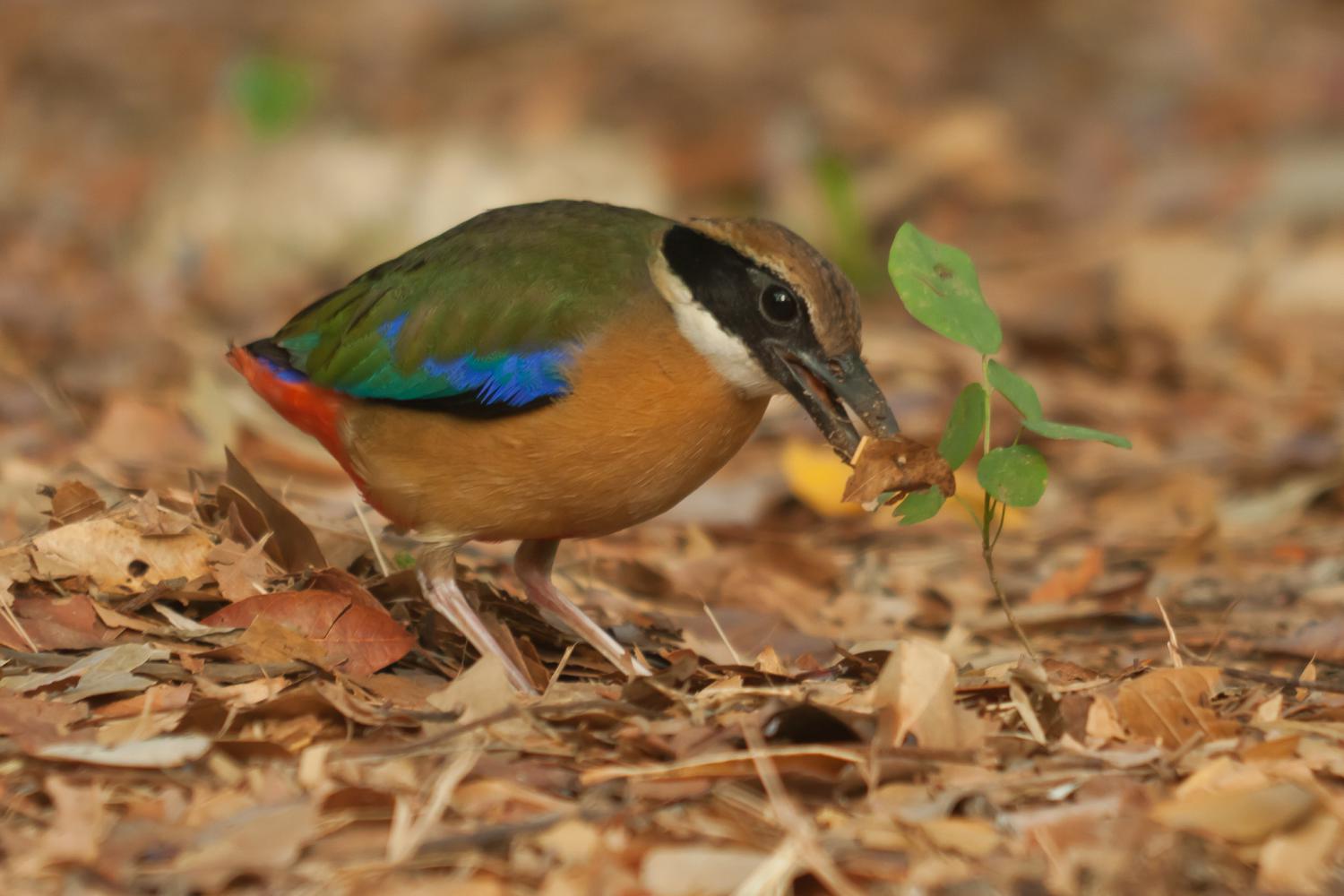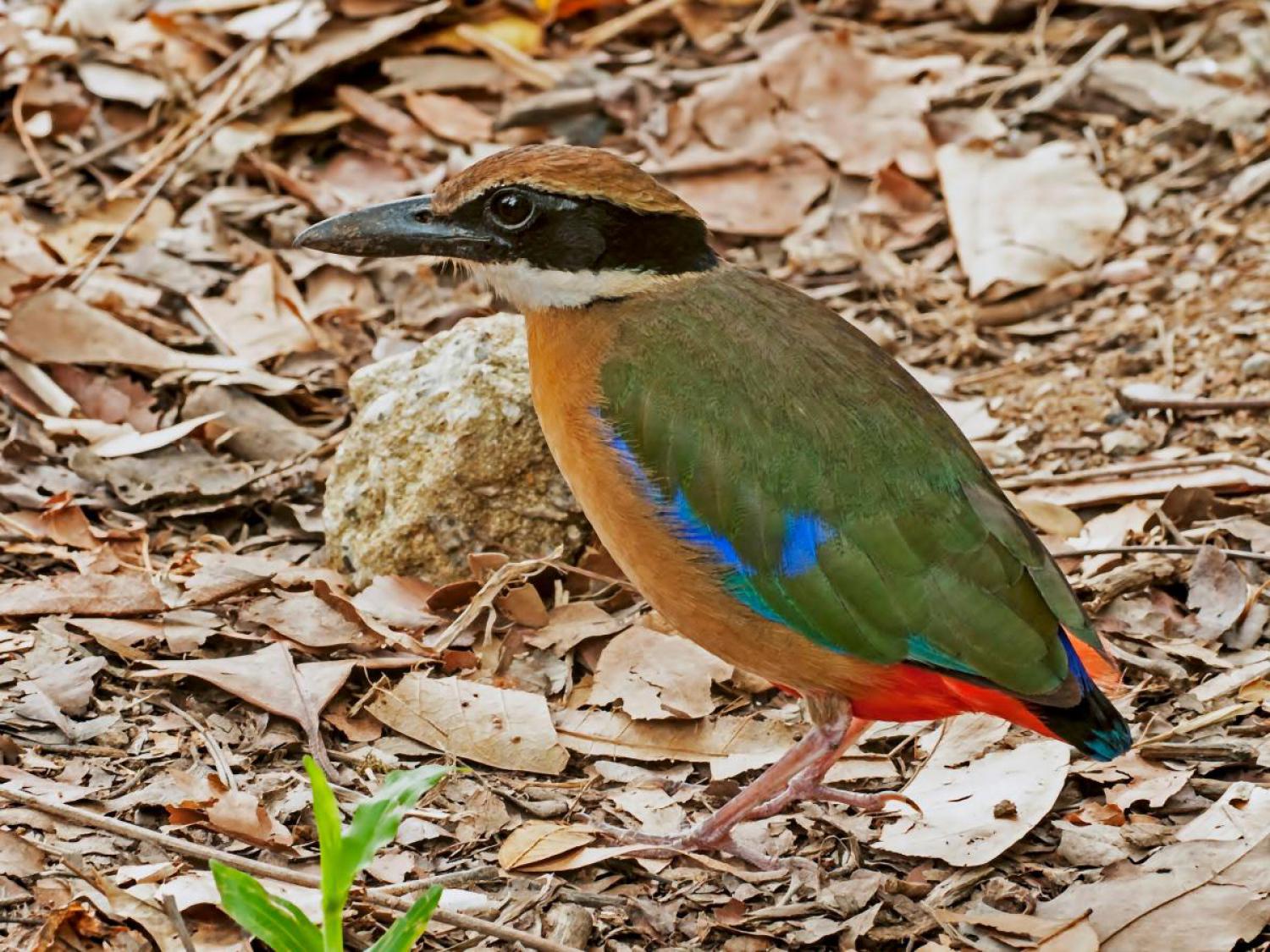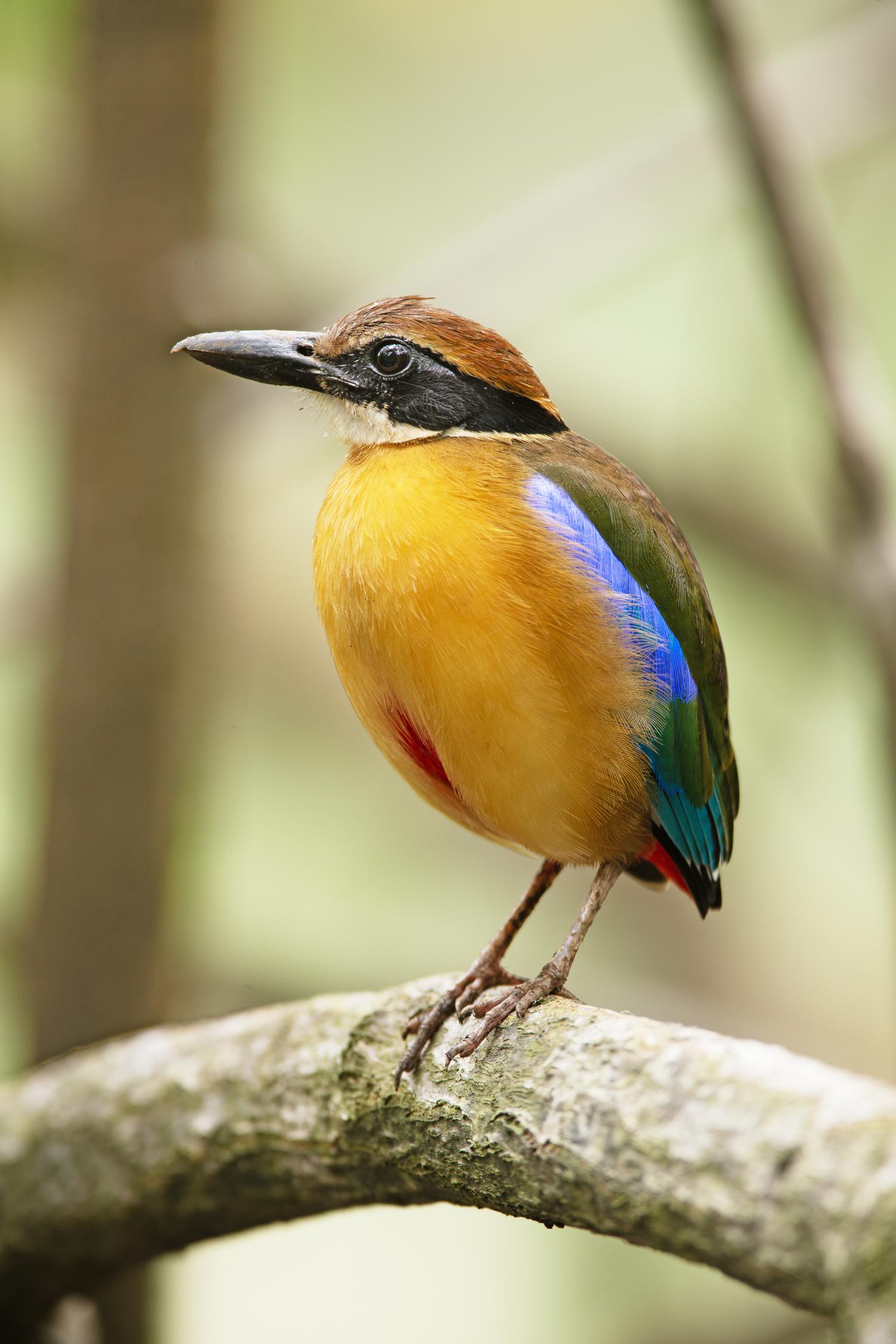Species of Thailand
Mangrove pitta
Pitta megarhyncha
Hermann Schlegel, 1863
In Thai: นกแต้วแล้วป่าโกงกาง
The mangrove pitta (Pitta megarhyncha) is a species of passerine bird in the family Pittidae native to the eastern Indian Subcontinent and western Southeast Asia. It is part of a superspecies where it is placed with the Indian pitta, the fairy pitta and the blue-winged pitta but has no recognized subspecies. A colourful bird, it has a black head with brown crown, white throat, greenish upper parts, buff underparts and reddish vent area. Its range extends from India to Malaysia and Indonesia. It is found in mangrove and nipa palm forests where it feeds on crustaceans, mollusks and insects. Its call, sometimes rendered as wieuw-wieuw, is sung from a high perch on a mangrove tree.
Taxonomy
The mangrove pitta was first described by German ornithologist Hermann Schlegel in 1863. Its species name is derived from the Ancient Greek words mega- "large", and rhynchos "beak". It forms a superspecies with the Indian pitta (P. brachyura), fairy pitta (P. nympha) and blue-winged pitta (P. moluccensis). Alternate common names include: Larger blue-winged/Malay pitta, Brève des palétuviers (in French), Große Blauflügelpitta (in German), and Pita de Manglar (in Spanish). There are no recognized subspecies.
Description
Measuring 180 to(-) 210 mm in length, the mangrove pitta has a black head with a buff-coloured crown, white chin and buff underparts. The shoulders and mantle are greenish and the vent is reddish. Juveniles have similar patterned plumage but are duller. It resembles the blue-winged pitta but can be distinguished by its much heavier bill. Its call, transcribed as wieuw-wieuw has been noted to be "more slurred" than the blue-winged pitta.
Distribution and habitat
The mangrove pitta is native to the countries of: Bangladesh, India, Indonesia, Malaysia, Myanmar, Singapore, and Thailand (primarily the west coast of the southern Thai peninsula). Its natural habitat is specialised and restriction to subtropical or tropical mangrove forests and Nipa palm stands. It is threatened by habitat loss. Its diet consists of crustaceans, mollusks and terrestrial insects.
Behaviour
While all pittas are noted for being difficult to study and spot in the wild, the mangrove pitta is one of the easier ones to spot as it sits high up in mangrove trees and calls. A tape recording of its call will often bring it forth. It tends to be vocal while brooding but quiet at other times.
This article uses material from Wikipedia released under the Creative Commons Attribution-Share-Alike Licence 3.0. Eventual photos shown in this page may or may not be from Wikipedia, please see the license details for photos in photo by-lines.
Category / Seasonal Status
BCST Category: Recorded in an apparently wild state within the last 50 years
BCST Seasonal status: Resident or presumed resident
Scientific classification
- Kingdom
- Animalia
- Phylum
- Chordata
- Class
- Aves
- Order
- Passeriformes
- Family
- Pittidae
- Genus
- Pitta
- Species
- Pitta megarhyncha
Common names
- Thai: นกแต้วแล้วป่าโกงกาง
Conservation status

Near Threatened (IUCN3.1)

Near Threatened (BirdLife)

Near Threatened (ONEP)

Near Threatened (BCST)
Photos
Please help us review the bird photos if wrong ones are used. We can be reached via our contact us page.
Range Map

- Ao Phang-Nga National Park
- Hat Chao Mai National Park
- Khao Sok National Park
- Khuan Khanun District, Phatthalung
- Khura Buri District, Phang Nga
- Ko Phra Thong
- Kra Buri District, Ranong
- Laem Son National Park
- Mueang Krabi District, Krabi
- Mueang Phang Nga District, Phang Nga
- Mueang Ranong District, Ranong
- Mueang Satun District, Satun
- Phi Phi Islands
- Similan Islands
- Sirinat National Park
- Sri Phang-nga National Park


